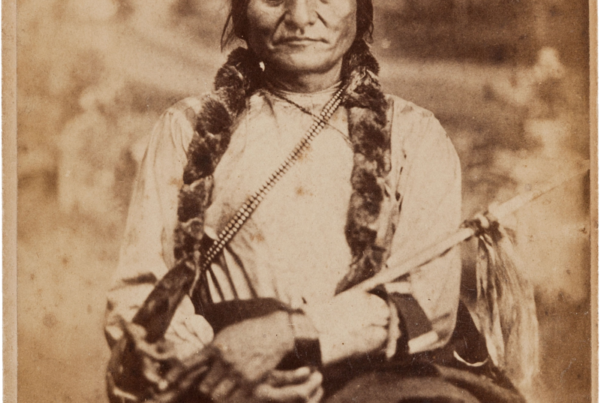This blog is part of a series of dispatches from Elena De La Paz, who is working at Casa Esperanza, a ministry that serves migrants in the northern border town of Los Chiles, Costa Rica. In this series, she wrestles with what it means to follow Jesus’ invitation to live justly, so that everyone can flourish. Read her other posts here and here.
It’s Eastertide, the seven week period post-Easter where we are invited to reflect on, celebrate, and LIVE the Resurrection.
I grew up in a church tradition that always focused on the ‘alleluias’ during Eastertide. We talked a lot about the Risen Jesus who appeared amongst his disciples and we proclaimed ‘alleluia’ in response to Jesus’s triumph over death.
All of this is true and is the story of the resurrection… but I’ve found my attention being pulled somewhere else this year..
These words reverberate within me: an empty tomb.
An empty tomb…
An empty tomb!
An empty tomb?
An empty tomb?!@#$%#%@
What are we to make of an empty tomb in a world that seems to keep digging mass graves?
I think about all of those – named and unnamed – who are being crushed and executed by Empire, just as Jesus was…
And also…
An empty tomb.
Why is it that we first see the risen Jesus appear at the site of the tomb? I think there is an important invitation to reflect on the why. Jesus could have chosen to first appear anywhere else… but he appeared at the site of the tomb, proclaiming resurrection life specifically at the place where the dead are laid.
But, what do these words mean to the migrant? To the one who is being deported? To the one who is incarcerated? To the one being held at an ICE detention facility? To the one who doesn’t even know the place in which they are being sent to or imprisoned? To the one who is sent to a center for terrorism in El Salvador? To the one who is desperately trying to flee the violence and abuse of empire?
There are so many faces that flash through my mind… faces of the many siblings I have encountered in their migrant journeys as they return to the northern border town of Costa Rica. And faces of the many whom I only know through pictures in the news stories. Images of the 200 some Venezuelan and Salvadorans deported to El Salvador’s center for terrorism, their expressions of fear cemented in my mind.
What does an empty tomb mean to each of these human beings who have been downcast and downtrodden by the world? To these siblings who are being stripped of their humanity?
“Those who live under the constant threat of death and dehumanization understand resurrection better than the rest of us.” (Gary Alan Taylor, Co-host of Holy Heretics: Losing Religion and Finding Jesus)
In Luke’s gospel account of the resurrection, the angel asks the women (women who knew all too well what it meant to be downcast and downtrodden in their context) who have arrived at the tomb to prepare Jesus’ body with spices, “why do you look for the living among the dead?”
This Scripture has always been painted for me with a brush stroke of condemnation – a kind of rebuke: why would you waste your time looking for the living among the dead – isn’t it obvious? Jesus is triumphant! Flee from this place of death and find safety and security with the living!
But this week, hundreds of brush strokes painted by the stories of migrants that I have met throughout this last year, showed me a different way to think about this Scripture…
“Like Mary (and the other women), we look for the living among the dead, because they have been promised resurrection.” (Gary Alan Taylor)
These words remind me of the beatitudes that seem so backward when viewed from the logic of empire.
But, if they – Jaime, Aranza, José Carlos, Luzmar… and Kilmar Ábrego García – are the ones that understand resurrection better than any of us, then perhaps the question, “why do you look for the living among the dead?” is actually a clue as to where we should be looking for the Risen Christ?
If Jesus is always in solidarity with the most marginalized and vulnerable, then we must follow Mary’s example and look for Resurrection Life among these places of violence and death.
The Resurrected Jesus could have first appeared to the disciples in a fancy palace, or simply on the road to Emmaus, or in the locked room where the disciples gathered, completely bypassing this first encounter with Mary and the women outside of the tomb. But he didn’t. He appeared to them – marginalized and vulnerable – at the tomb, the place of death.
For the Marys, the migrant, the incarcerated, the deported, the detained, the disappeared… I hold fast to the truth that Resurrection Life first appears in these places of death. Resurrection Life appears at the border walls, and the prison cells, and the detention centers.
The question is, will we, too, find the courage within us to look for the living among these places of death?
Will we stand in solidarity with the migrant proclaiming together the good news of Resurrection Life at the ICE detention centers?
Will we recognize our interconnectedness with the incarcerated person and seek our collective liberation at the prisons?
An empty tomb
What does this invite us to consider this Eastertide?
How will we punctuate these words by responding in our own lives? How will our lives reflect this truth that we proclaim?
Will we move closer to these places of death, because we know that Resurrection Life appears to us at the site of the tomb?








